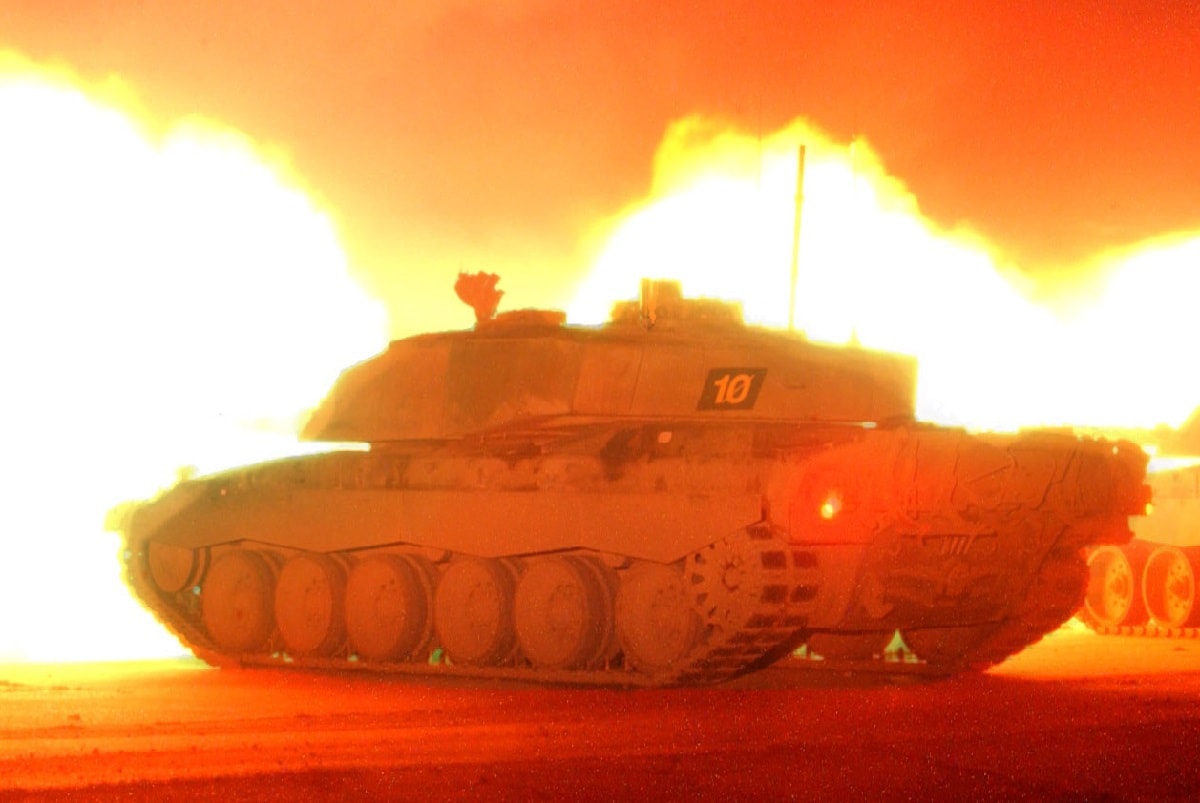Russia Using Cold War T-55s as ‘Kamikaze Tanks’ – Following the losses of literally thousands of modern tanks in Ukraine, the Kremlin has been forced to resort to sending in older T-62 tanks from the early Cold War to bolster its numbers.
In addition, Russia has employed even older T-54/55 series tanks – something few military analysts would be a good idea. Tanks that first rolled off the assembly line around the time when Russian President Vladimir Putin was an infant can’t be expected to do much on the modern battlefield.
There was a joke made that the tanks could head into combat and blow up, but apparently, some in the Kremlin took that notion to heart in a most unique way.
There were reports this week that the Russian military is employing those antiquated tanks as “kamikaze” weapons. We wrote up a very extensive analysis of the event just yesterday.
The T-54/55s are being laden with explosives, hooked up to simple radio remote controls, and rolled toward Ukrainian positions.
But is this vehicle-borne improvised explosive device (VBIED) actually an effective platform? Videos shared to social media this past weekend provide an answer, but the success comes down to who you believe.
What Each Side Said
Ukrainian forces have claimed one such tank that was rolling forward hit a mine and was then destroyed by anti-tank weapons, resulting in no casualties.
Russia has countered that a remote-controlled tank was filled with nearly six tons of explosives and reached a Ukrainian stronghold, where it exploded and resulted in a number of Ukrainian losses.
On the Telegram social messaging app, a Russian tank commander even claimed to have operated the vehicle remotely, suggesting that its detonation caused a massive shockwave on the battlefield.
“From my viewpoint, I watched as the unmanned tank approached the enemy base. I triggered the detonator at the right time, resulting in a massive explosion. The explosion was incredibly effective, causing heavy casualties to the enemy. Their losses were significant,” stated the commander on Telegram, per BulgarianMilitary.com.
That would seem to contradict the video evidence.
Though a T-54/55 tank did explode in a violently spectacular fashion in the social media clip, what was accomplished is unclear. Even if it did result in the destruction of one fortified position, it would seem to be a poor use of resources.
The T-54/55 Isn’t Suited to the Modern Battlefield
This latest attempt to find a use for the T-54/55 speaks of Russian desperation – not simply to bolster the number of tanks it has employed, but perhaps to justify why the Kremlin kept thousands of the Cold War-era tanks in storage for decades. Even before the dissolution of the Soviet Union, the leadership in Moscow maintained a “hoarder” mentality.
On paper it allowed the Soviet Union, and later Russia to lay claims of having more tanks than any other nation in the world. Of course, 70-year-old tanks are ill-suited for use in combat against a modern army. The tanks have thin armor, basic optics and are armed with a minimally-stabilized 100mm main gun.
As previously reported, they’re little than more metal coffins to be blunt.
As David Axe of Forbes noted, “The Russians know this. They at first deployed the T-54/55s along with slightly newer T-62s as short-range, mobile artillery. But a tank doesn’t make a great howitzer: its gun can’t angle high enough to shoot a shell more than 10 miles or so, and its optics don’t allow for long-range aiming.”
Instead, Russia is now filling them with explosives and sending them off as VBIEDs. It is simply a poor use of resources. These tanks have been in long-term storage and need at least an overhaul of their engines. In addition, the tanks then need to be shipped from storage in the Russian Far East to Ukraine via rail, and then rigged with explosives and fitted with a remote control system.
Even after being made ready, the chances of hitting a high-value target are low. There is the old saying, “Waste not, want not,” and Russia is clearly wasting these tanks.
It would have made more sense to sell them to museums and collectors years ago, rather than paying to keep them in storage. It should be crystal clear that a tank that is refurbished enough to serve as a remote-controlled bomb, only to fail to reach its target is worse than no tank at all.
Author Experience and Expertise
A Senior Editor for 19FortyFive, Peter Suciu is a Michigan-based writer. He has contributed to more than four dozen magazines, newspapers, and websites with over 3,200 published pieces over a twenty-year career in journalism. He regularly writes about military hardware, firearms history, cybersecurity, politics, and international affairs. Peter is also a Contributing Writer for Forbes and Clearance Jobs. You can follow him on Twitter: @PeterSuciu.

